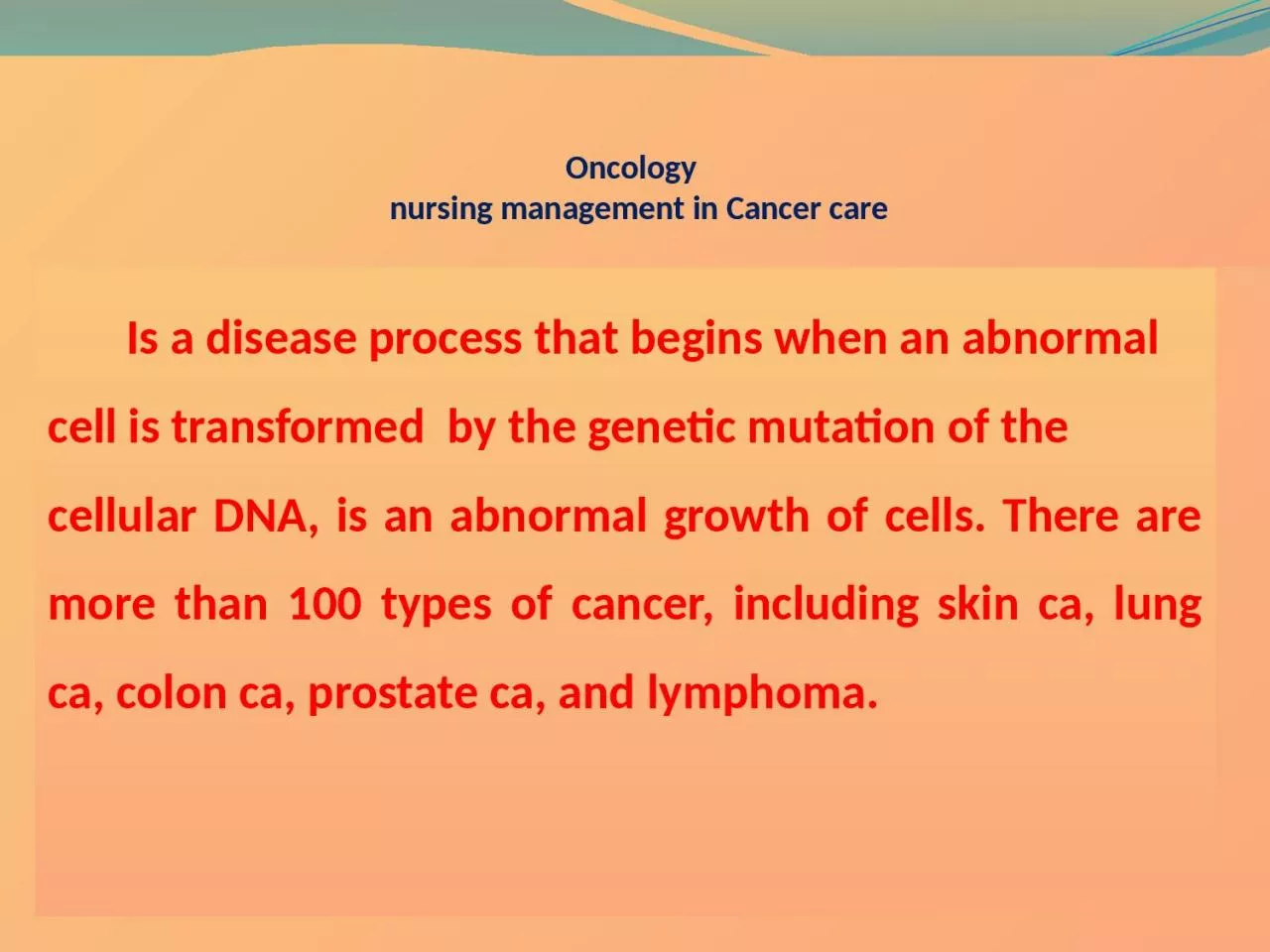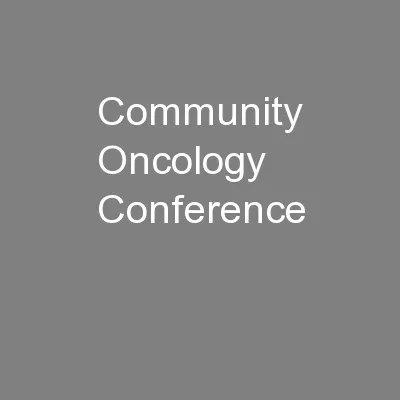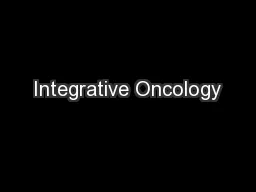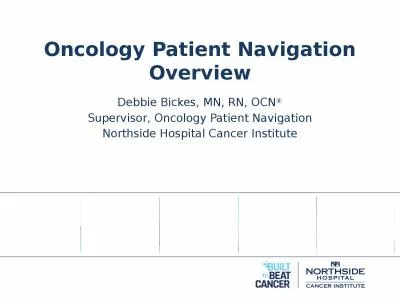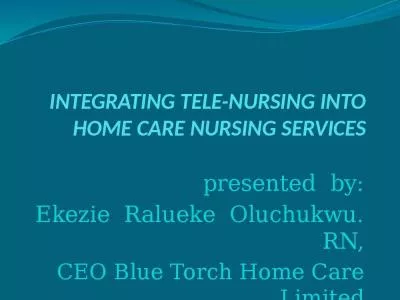PPT-Oncology nursing management in Cancer care
Author : audrey | Published Date : 2022-06-11
Is a disease process that begins when an abnormal cell is transformed by the genetic mutation of the cellular DNA is an abnormal growth of cells There are more
Presentation Embed Code
Download Presentation
Download Presentation The PPT/PDF document "Oncology nursing management in Cancer ..." is the property of its rightful owner. Permission is granted to download and print the materials on this website for personal, non-commercial use only, and to display it on your personal computer provided you do not modify the materials and that you retain all copyright notices contained in the materials. By downloading content from our website, you accept the terms of this agreement.
Oncology nursing management in Cancer care: Transcript
Download Rules Of Document
"Oncology nursing management in Cancer care"The content belongs to its owner. You may download and print it for personal use, without modification, and keep all copyright notices. By downloading, you agree to these terms.
Related Documents

